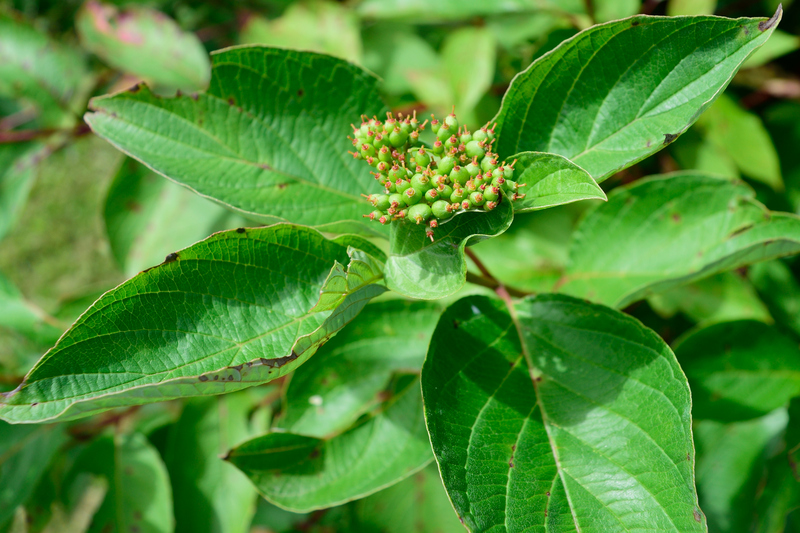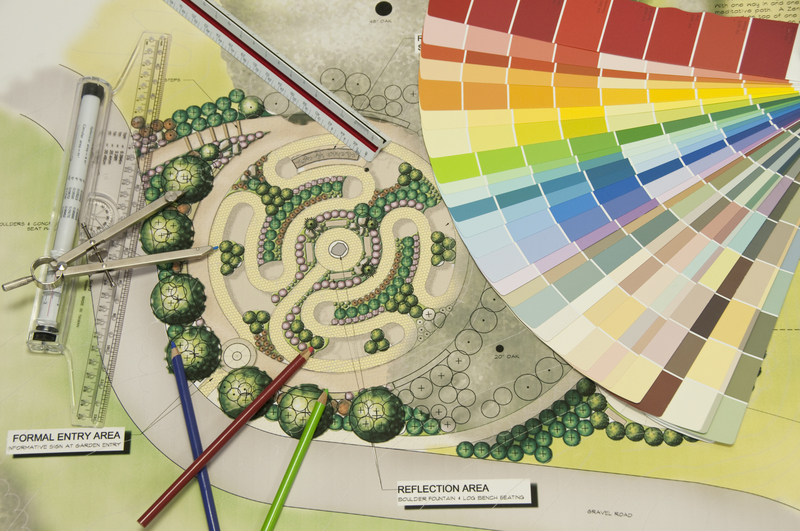Harmonizing Nature and Pooch in Your Garden
Posted on 19/06/2025
Harmonizing Nature and Pooch in Your Garden: Creating a Pet-Friendly Paradise
Do you dream of a vibrant, flower-filled garden yet also share your life with a beloved canine companion? Blending nature and pooch in your garden may appear challenging, but with the right approach, you can create a lush natural oasis that both your dog and the local wildlife can enjoy. This comprehensive guide explores practical, eco-friendly strategies for harmonizing your garden with your dog's needs while nurturing the beauty and biodiversity of your outdoor space.

Understanding the Dynamic: Dogs and Gardens
Garden harmony with dogs requires balancing various factors. Dogs love to explore, dig, and run, while you crave verdant borders, blooming flowers, and perhaps visiting birds or butterflies. How do you encourage natural beauty and biodiversity without sacrificing your pet's wellbeing or the integrity of your landscaping?
- Dog safety is paramount: Certain plants, fertilizers, and features can be toxic or dangerous for dogs.
- Wildlife protection: Your garden hosts a miniature ecosystem, and canine activity can affect small mammals, insects, and birds.
- Garden maintenance: Dogs may trample delicate plants, dig in flowerbeds, or damage lawns.
The key is designing and managing your outdoor space to meet the needs of your furry family member while supporting nature's balance.
Why Harmonize Your Garden with Nature and Pets?
Blending dogs and garden environments offers a wealth of benefits:
- Healthier pets: Dogs reap rewards from safe, stimulating environments.
- Wildlife preservation: Thoughtful landscaping supports bees, birds, and native species.
- Lower maintenance: Harmony reduces lawn destruction and plant losses.
- Personal satisfaction: Enjoy a vibrant, relaxing haven for you and your furry friend!
Step-by-Step: Designing a Pet-Friendly Natural Garden
1. Plan with Purpose
Before digging in, evaluate both your dog's unique habits and your vision for a naturally lush landscape:
- Assess your dog's behavior: Does your pup love to dig? Are they prone to running laps or investigating every nook? Observing their favorite activities helps you anticipate areas that need extra durability or protection.
- Identify garden goals: Do you want a butterfly-friendly border, homegrown vegetables, or an area for relaxation? List your dream features and prioritize them.
- Consider local flora and wildlife: Supporting native plants not only boosts biodiversity but often means a more resilient, low-maintenance garden.
2. Create Clear Zones for Pets and Nature
Successful dog and nature garden harmony often relies on zoning. Divide your yard into canine-focused and nature-centered spaces to lessen conflict and enhance safety.
- Dog play zones: Dedicate a section for roughhousing, games, and "zoomies." Hardy lawns or resilient groundcovers work well here.
- Pathways and borders: Guide your pup away from delicate areas with well-defined paths using gravel, mulch, or pavers.
- Nature sanctuaries: Preserve corners with dense plantings for pollinators, nesting birds, and small mammals--protected by low fencing or dense shrubs.
- Potty spots: Train your dog to use a specific gravel, mulch, or sand patch to minimize lawn or flowerbed burn.
3. Choose Dog-Safe and Nature-Friendly Plants
Not all greenery peacefully coexists with dogs! Select plants that suit both your pet's safety and garden's ecological health:
- Avoid common toxic plants: Lilies, daffodils, foxgloves, azaleas, and sago palms are dangerous to dogs.
- Pick tough, resilient species: Ornamental grasses, sunflowers, rosemary, lavender, and native wildflowers withstand canine play.
- Integrate pollinator magnets: Coneflower, salvia, milkweed, and herbs support bees and butterflies for a richer garden ecosystem.
- Go native when possible: Local shrubs and perennials are often healthiest for both your region and wildlife.
Pro tip: Check your region's pet-safe plant lists and always supervise pets with unfamiliar species.
4. Build Safe, Stimulating Features
- Water elements: Dogs adore water! Install a dog-friendly splash zone, or opt for shallow birdbaths for wildlife (raised out of your pooch's reach).
- Shady retreats: Provide shade with trees, tall shrubs, or purpose-built shelters for canine cool-downs while adding vertical diversity.
- Sensory enrichment: Consider scented plants (thyme, mint) and textured areas (bark chips, logs) for dogs and wildlife to explore.
- Safe boundaries: Use fencing, hedges, or rock borders to keep dogs out of delicate nature zones.
5. Make Pathways for Play & Patrol
Dogs love to patrol boundaries! Build defined pathways with non-slip, paw-friendly materials. This encourages your pet to stick to intended routes, protecting flowerbeds and reducing soil compaction.
- Materials: Gravel, decomposed granite, or bark mulch absorb impact and are safe for paws.
- Curving lines: Natural curves feel inviting to both people and pets, and allow for natural movement.
- Visual cues: Use low-growing plants or edging stones to mark barriers without obstructing views.
Dog- and Wildlife-Friendly Garden Maintenance
Eco-Friendly Lawn Care
Regular lawns and flowerbeds can suffer under eager paws and claws. Here are low-impact, pet-approved tips for garden harmony:
- Reduce chemicals: Avoid synthetic fertilizers, pesticides, and herbicides--use organic compost, natural pest control, or mulch instead.
- Manage "burn spots": Immediately hose down dog urine spots or designate a potty patch with sand or mulch.
- Choose tough grass blends: Fescue, rye, and clover tolerate foot traffic and bounce back quickly.
- Weed management: Prevent weeds with thick planting, mulch, or groundcovers safe for pets.
Clean Up Responsibly
- Pick up waste daily: Prevent runoff, deter pests, and keep your yard fresh.
- Avoid composting dog waste: It can contain pathogens harmful to humans, plants, and wildlife.
- Rinse toys, bowls, and water sources regularly for hygiene and to avoid attracting unwanted critters.
Protecting Wildlife Amidst Canine Capers
Harmonizing pets and nature means taking steps to shield vulnerable wildlife while letting your dog frolic. Dogs' natural curiosity can disturb ground-nesting birds, amphibians, or small mammals.
Wildlife-Friendly Features
- Create "off-limits" buffers: Use dense shrubs, brush piles, or fencing to carve wildlife sanctuaries where dogs can't reach.
- Elevate bird baths and feeders: Position them out of reach but visible, for you and feathered visitors.
- Nighttime curfews: Restrict dog access at dusk and dawn--key wildlife feeding and nesting times.
- Monitor nesting sites: Watch for eggs or young and temporarily block pup access if necessary.
Pollinator Support
- Plant densely and diversely: A mix of flowers of differing shapes, heights, and bloom times attracts a broader range of pollinators.
- Provide nesting habitat: Leave brush piles, hollow stems, or bug hotels where safe from dog play.
- Avoid insecticides: Choose natural pest management and accept some "chewed" leaves as part of a living ecosystem.
Clever Solutions for Common Challenges
Dealing with Digging
Many dogs dig instinctively. Rather than fight this natural urge, provide dedicated digging spots--a sand or soft soil patch with hidden toys--and reward use. Border vulnerable beds with log rolls, river stones, or chicken wire just beneath the soil to deter unauthorized excavations.
Protecting Delicate Plants
- Plant strategically: Place fragile or rare plants in raised beds, containers, or behind natural barriers like rocks or dense shrubs.
- Use deterrents: Citrus peels, pet-safe sprays, or rough mulch deter digging and trampling.
Preventing Escapes
- Fence securely: Ensure fences are tall and buried a few inches below ground to thwart jumpers and diggers.
- Check gates and latches regularly.
- Use visual deterrents: Hedges, shrubs, or trellises discourage fence-surfing and soften hard barriers for wildlife passage.
Reduce Barking at Wildlife
Train your dog to observe, not chase. Use distraction, distance, and positive rewards--over time your pooch can become a "wildlife watcher," adding to your enjoyment while reducing stress for local animals.
Emphasizing Sustainability and Biodiversity
A dog-friendly and eco-conscious garden means mindfully supporting sustainability at every stage:
- Use drought-tolerant, native plants that require less water and are better adapted to local wildlife.
- Mulch with organic matter to retain moisture, prevent weeds, and offer hiding places for insects (while being safe for dogs).
- Avoid invasive species that can outcompete native flora and harm local fauna.
- Maintain a layered habitat--canopy, mid-level shrubs, and groundcovers--to house a variety of species, giving dogs visual interest without upsetting nature's balance.
- Harvest rainwater or use permeable paving to support both your plants and our planet's fragile water supply.
Harmony in Action: Inspiring Case Studies
Urban Courtyard Oasis
Sara, an urban gardener in Portland, Oregon, turned her tiny backyard into a green retreat for her border collie, Max. Raised beds for veggies, a gravel running track for exercise, and a small pollinator patch--with bumblebees and hummingbirds--created a shared paradise. Max quickly learned to patrol the path, leaving beds undisturbed, while local bees thrived among the coneflowers.
Suburban Pollinator Paradise
The Jacobs family designed an enclosed meadow with tough clover and rye, plus low fences around butterfly patches. Their retriever, Daisy, loved lounging in shaded corners while sparrows, bees, and native butterflies flitted by, safe and unhindered. Blending hardy plants and smart fencing made beauty accessible to all the garden's residents.
Woodland Wild Dog Retreat
In a rural woodland, Marcus combined deadwood piles for insects, berry bushes for birds, a digging pit for his terrier, and natural stone barriers. The result--a thriving, biodiverse garden--supported wildlife corridors, provided canine adventure, and never sacrificed natural harmony.

Frequently Asked Questions: Harmonizing Nature and Pooch in Your Garden
Which common garden plants are safest for dogs?
Tough, non-toxic choices include sunflowers, rosemary, thyme, snapdragons, marigolds, nasturtium, calendula, and most native grasses. Always double-check with your local vet and extension office.
How do I protect both birds and my dog?
Elevated bird feeders and dense shrub shelters keep wildlife safe. Train your dog away from "nature zones," use soft fencing, and supervise during high-activity nesting or feeding periods.
Will a dog ruin my pollinator garden?
Not with thoughtful design! Use tough perimeter plants, low edging, raised beds, and "dog-safe lanes." Most dogs learn where they can and can't go with positive reinforcement.
Do eco-friendly fertilizers harm pets?
Organic fertilizers are safer but should still be kept out of reach or thoroughly watered in. Always avoid cocoa mulch and chemical additives, which can be toxic to dogs.
Conclusion: Savoring a Dog- and Nature-Friendly Garden
Harmonizing nature and your pooch in your garden isn't about drawing hard boundaries, but about blending your love for the outdoors and your canine companion. With smart plant selections, clear pathways, wildlife sanctuaries, and eco-conscious management, your garden can flourish into a welcoming paradise for pets, people, and pollinators alike.
Embrace the joy of a dynamic, biodiverse landscape--one where paws, petals, and pollinators coexist in natural balance.
Want to share your own success story or tips about achieving dog and nature garden harmony? Leave a comment below--let's grow our gardens and our community together!

